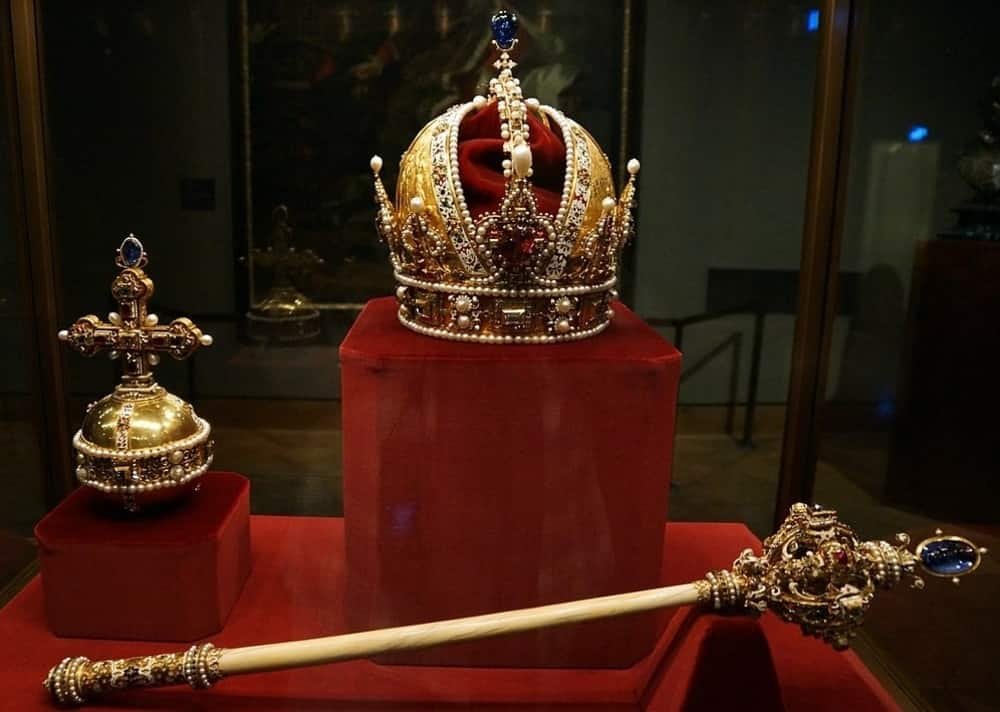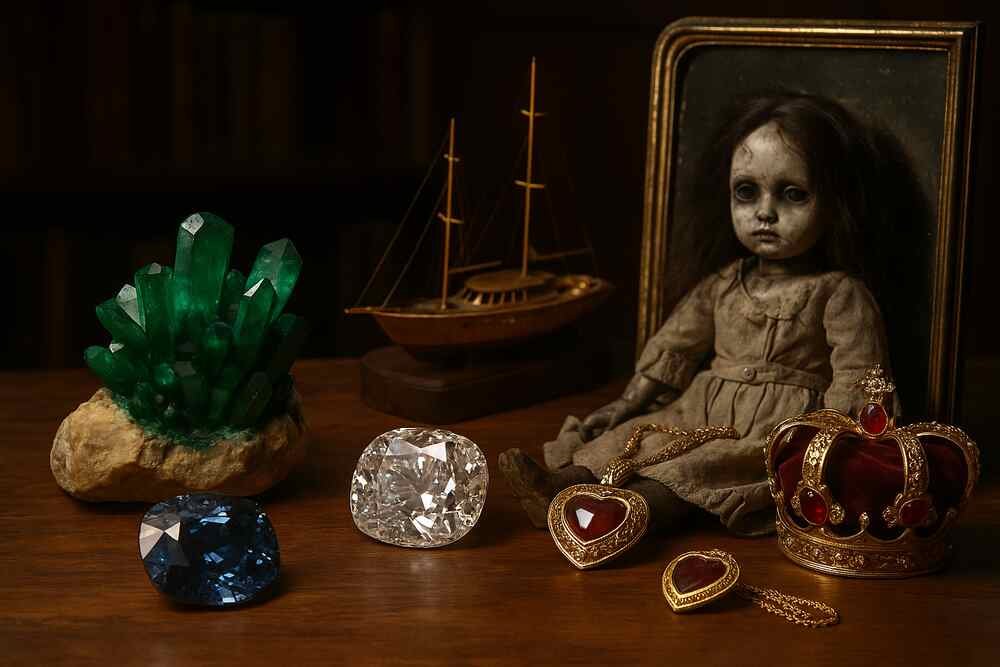European Noble Ranks
The European noble ranks among the European society has its roots in the Late Ancient and Middle Ages. Even so, there are some differences in each period and each region. This European noble ranks are written in English. You can se below the European noble ranks in Latin, French, German, Russian and Spanish.
In medieval Europe and earlier, an empire or empire usually did not have a central government. Several regions and territories within a large monarchy (empire or kingdom) are usually administered and led by aristocrats who have autonomous powers, similar to a federal republic system that gives each regional leader the authority to manage his own territory without too much interference from the center.
These aristocrats had different ranks, which also impacted the amount of power they held. These ranks and titles were usually conferred by the emperor or king who was the leader of the aristocrats, and in many cases these titles could be passed on to their descendants.
Each region in Europe has its own level of nobility which has several differences from one country to another. Some titles in a country sometimes do not have their equivalent in other countries and languages, even though they are still within the scope of the European continent. However, several levels commonly known in the European continent are: emperor (emperor), king (king), duke (duke), marquess, count or earl, viscount, and baron.
1. Emperor
The emperor is the highest level of nobility and monarch in the rank of European nobility. This title comes from the ancient French empereor, from the Latin imperator) which originally meant “commander” in the Roman Republic. The emperor’s territory is called the empire.
The female form of this title is empress and can be divided into two types, namely empress regnant, which is a woman who rules the empire on her own behalf or empress consort who is the wife of the emperor.
2. King
King comes from the German language: kuningaz, which means “son of the nation.” The territory of the king is called kingdom, which can be equated with “kingdom”. The position of the king is generally under the emperor; while the sovereign king is higher than the king who is the subordinate of other leaders.
The female form of king is queen. Queen comes from the German kwoeniz or kwenon which means “wife.” Queen itself can be used as a title for a woman who leads the kingdom (queen regnant) or limited to the wife of the king (queen consort).The title that is equivalent to queen in general, whether in the context of being a ruler or as a wife of a ruler, is queens. Meanwhile, the empress, or more specifically, the empress of the king, can only be equated with queen in the context of being the wife of the ruler (queen consort).
High King
High King is a title used by a king who has seniority above other kings, without holding the title of emperor. Another title which is equivalent to high king is king of kings
3. Duke
Duke is one of the European nobility whose position is under the king. This title derives from the Latin dux or leader, the title held for military leader of the Roman Republic. The conferment of the title of duke is often very limited to the royal family or to those who are deemed to have a very high and worthy position in the eyes of the royal family.
The female form of this title is duchess which can indicate a woman who bears the title in her own name, or is limited to the wife of the duke. Duchess can be translated as wife of duke or duke if she bears the title in her own name, not because of marriage. However, Queen Elizabeth II bears the titles Duke of Normandy on the Channel Islands and Duke of Lancaster in Lancashire, and not duchess.
The territory of a duke or duchess is called a duchy. The status of a duchy can be in the form of a sovereign state or a territory part of a kingdom (kingdom) or empire (empire). In modern times, many people who hold the title of duke or duchess are only limited to honorary titles and nobility without any realm of power.
Grand Duke
Over time, the duke’s prestige declined in the Middle Ages because this title was often given to feudal lords with narrow domains of power, resulting in the formation of a new title, namely grand duke. In Western Europe, this title was first held by the ruler of the Tuscana region on the Italian peninsula. The grand duke shows a monarch who has an important role in politics, military, or economics, but is not big enough to be seen as a kingdom. The female form of this title is grand duchess and her domain is called grand duchy. At present, the only sovereign country that has the form of a grand duchy is Luxembourg.
Archduke
Archduke (female: archduchess) is a title used since 1358 by the Habsburg ruler who ruled Austria. Within the Holy Roman Empire, these titles came under emperor and king and above grand duke (disputed) and duke. The domain of an archduke is called an archduchy.
Then since the sixteenth century, the titles of archduke and archduchess were held by all members of the Habsburg dynasty without any territorial power.
4. Prince
Prince is a European noble ranks. The female form of this title is princess.
Although often identified with the title for the descendant of a king or emperor, prince is actually a title for the head of a monarchy who is below the king. However, English uses the same title for these two different positions, as well as in other Romance languages. This is in contrast to the Dutch, Scandinavian, and Slavic languages which have two different titles for this. As in German, the prince who is the leader of the monarchy is called fürst (female form of fürstin), while the prince who is the descendant of the monarch (emperor, king, or fürst) is called prinz (prinzessin for woman). Both fürst and prinz are both translated into English as prince.
A region ruled by a prince (fürst) is called principality (fürstentum in German). Sovereign countries that are currently in the form of principality are Andorra, Liechtenstein, and Monaco. In central Europe, the fürst was under the duke.
Read also: Prince Philip Duke of Edinburgh, Elizabeth II’s Husband
5. Marquis
Marquess is a knight under the duke and above the earl or count. The French pronunciation for this title, marquis, is often used in English. Women at this stage, either in their own name or as wives of the marquess, hold the title of marchioness in Great Britain and Ireland or marquise elsewhere in Europe. In the past, the difference between a marquess and a count was that the land of the leadership of the marquess, called a march or mark, was on land at the border of the country, whereas normally the count was not. This makes a marquess trusted to protect the country from potential attacks by neighboring countries, making his position above the count.
6. Count
Count (male) or countess (woman) is a European noble title that has various statuses. The word was derived from the French comte, from the Latin comes, meaning ally, and then meaning “ally of the emperor” or “ambassador to the emperor”. In the Western Roman Empire, count was the leader of the armed forces without a specific rank. Whereas in the Eastern Roman Empire in the seventh century, count refers to the rank of a leader out of two hundred people. During the Karoling Empire, the count could be likened to a governor who headed a province or other, smaller region. The count’s territory is called a county. The UK peerage system does not use this title, but instead uses the title earl.
7. Earl
Earl is a knighthood. In the UK peerage system it is under marquess and equates to count. This title comes from old English, similar to the Scandinavian language jarl which means “chieftain” who ruled a region on behalf of a king. There is no female form of the word earl, so the title countess is its female equivalent, referring to a woman who is in this rank under her own name, or the wife of earl.
Initially Earl served as the governor of the kingdom. Unlike the duke, the Earl did not rule in his own name. In ancient England, the earls had authority over their territory and the right to court a provincial court as ambassadors for the king. They can also collect fines and taxes. During the war, Earl was given the mandate to lead the king’s army. Several shires (an old term for a section within a region in Great Britain) unite and form a larger unitary territory called an earldom headed by an earl.
8. Viscount
The viscount is a European peerage that has a variety of statuses, but has historically been in the lower middle ranks. In many countries, viscount was not originally a hereditary title until recently and held administrative and judicial positions. The female form of this title is viscountess.
The word viscount comes from the Latin vice “vice” and comes “ally of the emperor”. [8] During the Karoling Empire, the king sent counts as administrators of provinces and smaller territories as governors and commander of the armed forces, while the viscount was assigned as the count’s deputy in administering the province, and was often in charge of judicial matters. The king strictly kept the offices of count and viscount from becoming hereditary titles, in order to maintain their authority and suppress the possibility of rebellion.
9. Baron
Baron is an honorary title that can often be inherited. The female form of this title is baroness. In the peerage system (a legal system consisting of hereditary titles in various countries, consisting of several tiers of aristocrats) in Great Britain, barons are at the lowest level and below the viscount.
10. Baronet
Baronet is a hereditary honorary title that is not included in peerage. Baronets are not viewed as aristocratic class, nor are they of lower aristocrats. The female form is baronetess.
11. Knight
Knight is an honorary title conferred by the leader of the monarchy or other political leaders to those who have served the monarchy or the country, usually in the army. In medieval times, knights were considered to be of the lower aristocratic class. The title dame, used as the official equivalent of female knight, was introduced in 1917 by the British Imperial Order.
Expression Blue Blood
Expression evoking nobility, which appeared in France around 1877 and translated from the Spanish sangre azul. The Spanish nobility claimed to have no Moorish or Jewish ancestry, and consequently to have fair skin under which the veins appeared.
Palace of Versailles | Trianon, Queen’s Hamlet and Visits (Chateau de Versailles)
European Noble Ranks (Aristocracy) in various European languages
| Latin | French | German | Rusian | Spanish | |
|---|---|---|---|---|---|
| Emperor, Empress | Imperator/ Caesar, Imperatrix/ Caesarina | Empereur, Impératrice | Kaiser, Kaiserin | Imperator/Tsar, Imperatritsa/Tsarina | Emperador, Emperatriz |
| King, Queen | Rex, Regina | Roi, Reine | König, Königin | Koról/Tsar, Koroléva/Tsaritsa | Rey, Reina |
| Grand Duke/ Grand Prince, Grand Duchess/ Grand Princess | Magnus Dux/ Magnus Princeps, Magna Ducissa, Magna Principissa | Grand-Duc, Grande-Duchesse | Großherzog/ Großfürst, Großherzogin/ Großfürstin | Velikiy Knyaz, Velikaya Kniagina | Gran Duque, Gran Duquesa |
| Archduke, Archduchess | Archidux, Archiducissa | Archiduc, Archiduchesse | Erzherzog, Erzherzogin | Ertsgertsog, Ertsgertsoginya | Archiduque, Archiduquesa |
| Duke, Duchess | Dux, Ducissa | Duc, Duchesse | Herzog, Herzogin | Gertsog, Gertsoginya | Duque, Duquesa |
| Prince, Princess | Princeps, Principissa | Prince, Princesse | Prinz/Fürst, Prinzessin/Fürstin | Kniaz, Kniagina | Príncipe, Princesa |
| Marquess, Marchioness | Marchio, Marchionissa | Marquis, Marquise | Markgraf, Markgräfin | Markiz, Markiza, Boyar | Marqués, Marquesa |
| Earl / Count, Countess | Comes, Comitissa | Comte, Comtesse | Graf, Gräfin | Graf, Grafinya | Conde, Condesa |
| Viscount, Viscountess | Vicecomes, Vicecomitissa | Vicomte, Vicomtesse | Vizegraf, Burggraf Vizegräfin, Burggräfin | Vikont, Vikontessa | Vizconde, Vizcondesa |
| Baron, Baroness | Baro, Baronissa | Baron, Baronne | Baron, Herr, Freiherr Baronin, Frau, Freifrau, Freiin | Baron, Baronessa | Barón, Baronesa |
| Baronet, Baronetess | Baronnet | Baronet | Baronet | ||
| Knight / Dame | Eques | Chevalier | Ritter | Rytsar | Caballero |
Overview: titles of nobility and nobility ranks in Germany
Basically there were the following titles (in order of rank in descending order)
| Ruler title | Salutation (predicate title) | general title for the descendants | annotation | ||
|---|---|---|---|---|---|
| male | Female | male | Female | ||
| Emperor (also tsar) | Empress (also Zariza) | (Imperial) majesty | (Crown) Prince, but with the sons of the Russian Tsar: Tsarevich or Grand Duke | (Crown) Princess, with the daughters of the Russian Tsar: Tsarevna or Grand Duchess | For the princes of the imperial house, the salutation Imperial Highness. |
| King | Queen | (Royal) Majesty | (Crown) Prince | (Kron) princess | For the princes of the royal house, the salutation Royal Highness. |
| Archduke | Archduchess | Imperial and Royal Highness (formerly: Most Serene) | Archduke | Archduchess | The title was regularly available to the members of the House of Habsburg . |
| Grand duke | Grand duchess | Your Royal Highness (Salutation: Most Serene) | Prince / Hereditary Grand Duke | Princess / Hereditary Grand Duchess | For the princes and princesses of the grand ducal houses of Luxembourg, Hesse and Baden, the salutation Royal Highness. |
| Prince-elector | Princess-electress | Royal Highness (formerly: Most Serene ) | Elector Prince | Electoral princess | In the Holy Roman Empire (HRR), an elector was one of the high nobility who was entitled to elect a king or emperor. Electors carried different titles of nobility (kings, dukes, archbishops, counts, margraves and palatine counts). In contrast to today’s usage, the title of elector did not refer to the ruled territory, but to the empire. For example, the title of the Brandenburg ruler was not “Elector of Brandenburg”, but “Elector of the Holy Roman Empire, Margrave of Brandenburg”. After the dissolution of the Holy Roman Empire, only the Landgrave of Hessen-Kassel carried this title as a personal title until 1866. He was considered equal to a grand duke. This information relates to the latter. |
| Duke | Duchess | (Royal) Highness (ruling), Your Highness ( noble / mediatized ) | Prince | Princess | Ruling dukes from the royal family and their direct descendants were addressed as “Your Royal Highness”. |
| Landgrave | Landgrave | Your Highness, Your Highness | Prince | Princess | The title was only available in the German-speaking area (examples: Thuringia, Hesse). Only occasionally belonging to the imperial princes, they were nevertheless equal in rank to the dukes. L. von Hessen-Homburg, as the last bearer of the L. title, was addressed as imperial prince “Royal Highness”; likewise the L. and Prince of Hesse. Members of secondary lines headlined “Highness” or “Highness”. |
| Count Palatine | Countess Palatine | Your Highness, Your Highness | Prince | Princess | The Count Palatine near Rhine was imperial vicar for the areas under Franconian law when the throne was vacant. As the sovereign elector, he deserved the title “Your Royal Highness”. For the states under Saxon law, this was the Elector of Saxony . As elector, he was entitled to the title of “Royal Highness”. The title lost its character as a ruler title after 1806. |
| Margrave | Margravine | Your Highness, Your Highness, Your Highness | Prince | Princess | In Germany mostly sovereign princes, some of whom were granted electoral dignity (the Margrave of Brandenburg in 1356, the Margrave of Baden in 1803). On the other hand, the title enjoyed changing prestige and was considered to stand on the border between the high and low nobility. |
| Prince | Princess | Highness, High Princely Highness (ruling), Highness (mediatized, also titular Prince) otherwise: Princely graces | (Hereditary) Prince or (Hereditary) Count | (Hereditary) Princess or (Hereditary) Countess | The ruling princes of Reuss , von Lippe and von Schaumburg-Lippe were addressed as “Hochfürstlich”. Only the Prince of Hohenzollern deserved the title “Highness”. Titular princes on the basis of personal bestowal possessed i. d. As a rule no rulers’ rights ( imperial estate ) and therefore did not belong to the high nobility per se. A prominent example was Otto Fürst von Bismarck . |
| Count | Countess | Sublime (ruling or mediatized imperial count ), otherwise: highborn | Hereditary Count | Hereditary Countess, Countess | Newly ennobled titular counts without rulership rights (imperial estate) were considered to belong to the lower nobility. For unmarried female family members: Komtess or Comtesse (out of use). |
| Baron | Baroness, Baroness | Highborne (nobility), otherwise: Hochwohlgeboren | Freiherr, Baron | Baroness , Baroness | |
| Knight, noble, lord of, junker of, farmer of | Noble woman from, junk woman from | Highly born | Knight, noble, lord of, junker of | Noble, Miss / Mrs. von, Junk Frau von | From the 19th century onwards, knights were a separate aristocratic class in Bavaria, to which all residents who had been awarded an Order of Merit also belonged. |
Read also: Nobility and Greeting Vocabulary for Noble or Aristocracy
Sources: PinterPandai, Avictorian, Nobility Royalty
Photo credit: Wikimedia Commons
Photo explanation: The imperial crown, orb, and sceptre of Austria, displayed in the Imperial Treasury at the Hofburg, Vienna, Austria



